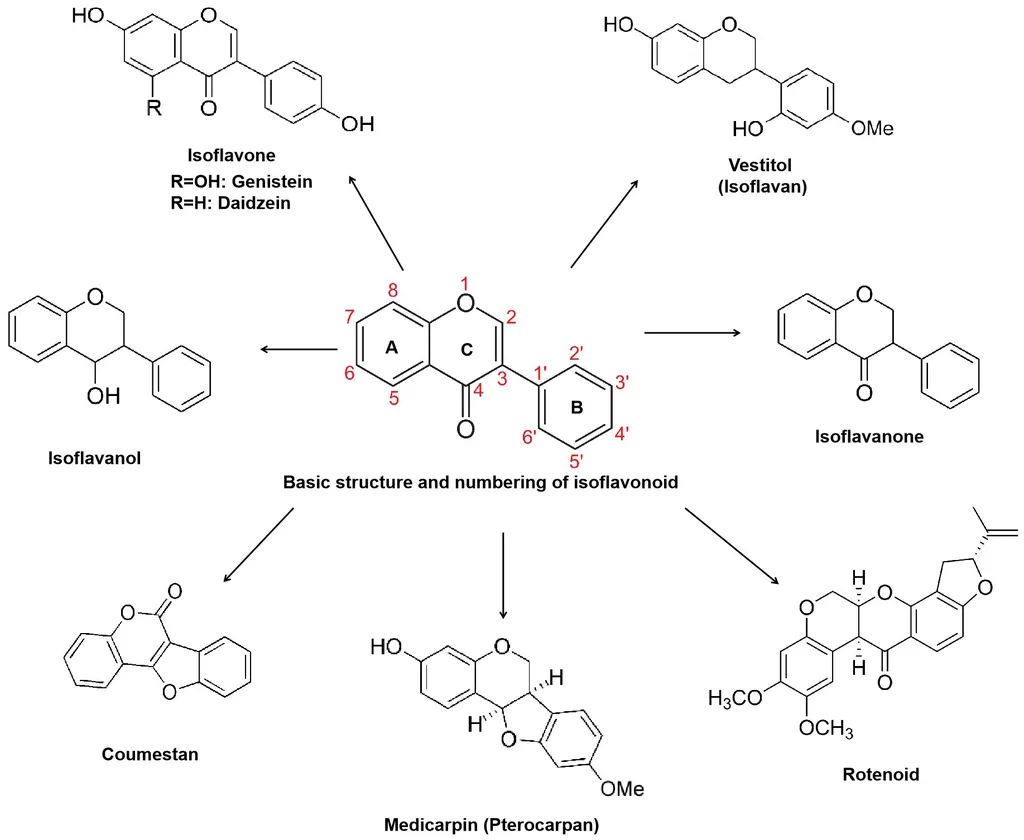In the ever-evolving landscape of agricultural science, a recent study published in *Scientific Reports* has shed new light on the metabolic profiles of soybean leaves and seeds, offering promising insights for breeders and farmers alike. The research, led by Kihun Ha from the Plant Biomaterials and Biotechnology Division at the National Institute of Agricultural Sciences, delves into the dynamic polyphenolic profiles of soybeans across various developmental stages, with a particular focus on flavonoids and isoflavones.
Soybean, a globally important crop, is already celebrated for its high protein content and health benefits. However, the metabolic profiles of its leaves at different growth stages have remained underexplored until now. Ha and his team identified 16 flavonoids and isoflavones through ultra-performance liquid chromatography-mass spectrometry (UPLC-MS/MS) in 10 genetically diverse soybean varieties across six leaf developmental stages and seeds. This meticulous analysis revealed significant metabolic differences among the seed profiles and highlighted key discriminative metabolites such as naringenin, genistin, and kaempferol.
The study employed advanced data analysis techniques, including principal component analysis (PCA) and partial least squares discriminant analysis (PLS-DA), to explore metabolite changes across stages. Orthogonal PLS-DA further separated vegetative and reproductive stages, providing a comprehensive understanding of the metabolic dynamics. “Our findings reveal that flavonoids, particularly kaempferol glycosides, are abundant in the leaves, while isoflavones like daidzin and genistin dominate the seeds,” Ha explained. This distinction is crucial for breeders aiming to enhance the nutritional quality of soybean varieties.
The research also identified specific cultivars with the highest levels of kaempferol glycosides, including Hoseo, Sohwang, and Kwangan. By correlating these metabolites with six key polyphenolic biosynthesis genes, the study uncovered variety-specific regulation patterns. This information could pave the way for targeted breeding programs to develop soybeans with enhanced nutritional profiles.
The commercial implications of this research are substantial. For the agriculture sector, understanding the metabolic profiles of soybeans at different stages of development can lead to more informed breeding strategies. Farmers can benefit from varieties that not only yield better but also offer superior nutritional content, meeting the growing demand for health-conscious food products. “This study provides key insights into developmental metabolite dynamics in soybeans and supports strategies to enhance soybean nutritional quality,” Ha noted.
As the agricultural industry continues to evolve, the integration of advanced analytical techniques and genetic insights will be crucial. This research not only advances our understanding of soybean metabolism but also sets the stage for future developments in crop improvement. By leveraging these findings, the agriculture sector can move towards more sustainable and nutritious food production, ultimately benefiting both farmers and consumers alike.

